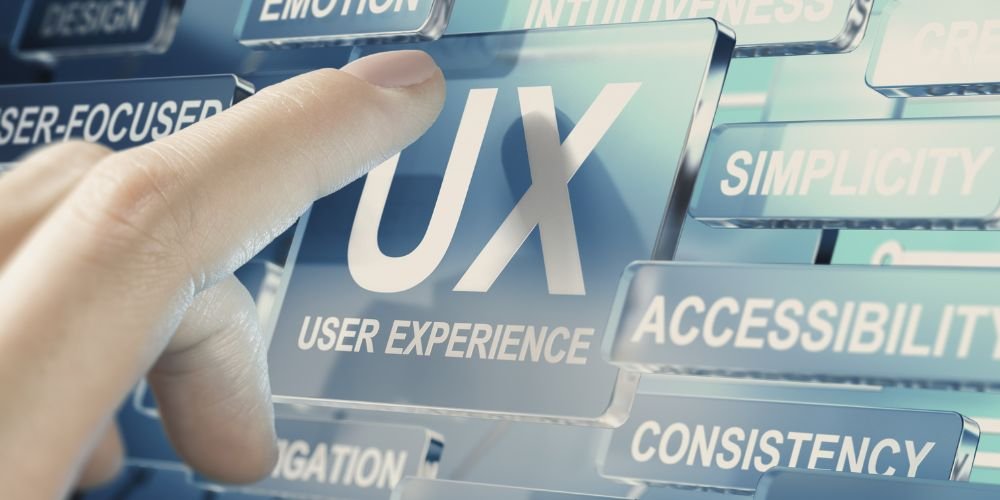User Experience (UX) design plays a crucial role in shaping the interactions between users and digital products, ensuring satisfaction, usability, and delight. This comprehensive guide explores the principles, processes, and best practices of UX design, highlighting its importance in creating intuitive and engaging experiences.
Understanding User Experience (UX)
User Experience (UX) encompasses all aspects of a user’s interaction with a product or service, including its usability, accessibility, and emotional impact. It involves understanding user needs, behaviors, and preferences to design intuitive interfaces and meaningful interactions that meet user goals and expectations.
Human-Centered Design
Human-centered design is at the core of User Experience (UX) design. It focuses on empathy, collaboration, and iterative problem-solving to create products that resonate with users. By involving users throughout the design process, from research and prototyping to testing and iteration, designers can better understand user needs and design solutions that address real-world challenges.
Usability and Accessibility
Usability and accessibility are fundamental aspects of User Experience (UX) design, ensuring that products are easy to use and accessible to users of all abilities. Designing intuitive navigation, clear hierarchy, and inclusive features, such as alternative text for photos and keyboard navigation, improves usability and enables a broader range of users to access and interact with digital products.
Emotional Design
Emotional design focuses on eliciting positive emotions and creating memorable experiences that resonate with users emotionally. By incorporating visual aesthetics, storytelling, and brand personality into the design, User Experience (UX) designers can evoke trust, joy, and satisfaction, fostering long-term engagement and loyalty among users.
Key Principles of UX Design
Effective UX design is guided by several key principles that inform the creation of intuitive, user-centric experiences.
Clarity and Simplicity
Clarity and simplicity are essential for User Experience (UX) design, ensuring that interfaces are easy to understand and navigate. By minimizing complexity, reducing cognitive load, and prioritizing essential content and actions, designers can create intuitive experiences that empower users to accomplish tasks efficiently and effectively.
Consistency and Familiarity
Consistency and familiarity promote usability and establish user trust by maintaining uniformity across interfaces and interactions. By adhering to established design patterns, conventions, and branding guidelines, designers can create cohesive experiences that feel familiar and predictable, reducing friction and enhancing user confidence in the product.
Feedback and Responsiveness
Feedback and responsiveness are critical for providing users with clear signals and guidance throughout their interactions with a product. By offering immediate feedback, such as visual cues, animations, and error messages, designers can inform users of their actions, validate their inputs, and guide them toward successful outcomes, enhancing the overall user experience.
UX Design Process
The User Experience (UX) design process is a systematic approach to creating user-centered solutions. It consists of several stages: research, ideation, prototyping, testing, and iteration.
Research and Discovery
Research and discovery involve gathering insights into user needs, behaviors, and pain points through user interviews, surveys, and usability testing. By understanding user goals and context, designers can identify opportunities for improvement and inform the product’s design direction.
Ideation and Prototyping
Ideation and prototyping involve generating ideas and exploring design concepts through sketches, wireframes, and interactive prototypes. By visualizing and iterating on design solutions, designers can quickly explore different approaches, gather stakeholder feedback, and refine their designs before implementation.
Testing and Iteration
Testing and iteration involve evaluating design prototypes with real users to gather feedback, identify usability issues, and validate design decisions. By observing user interactions, collecting qualitative feedback, and analyzing usability metrics, designers can iteratively improve the user experience and address any usability issues before the final product launch.
Tools and Technologies
Various tools and technologies are available to User Experience (UX) designers to streamline the design process, prototype interactions, and collaborate with stakeholders.
Design Tools
Design tools like Sketch, Adobe XD, and Figma provide designers with powerful features for creating wireframes, mockups, and high-fidelity prototypes. These tools enable designers to collaborate with team members, iterate on designs, and generate design specifications for developers.
Prototyping Tools
Prototyping tools like InVision, Marvel, and Axure RP allow designers to make interactive prototypes to simulate user interactions and test design concepts. By building clickable prototypes with transitions and animations, designers can gather feedback from stakeholders and validate design decisions before development.
Collaboration Platforms
Collaboration platforms like Slack, Microsoft Teams, and Figma’s collaborative features facilitate communication and collaboration among cross-functional teams, including designers, developers, and product managers. By centralizing communication, sharing design files, and soliciting feedback in real-time, collaboration platforms help streamline the design process and foster a culture of collaboration and transparency.
Conclusion
User Experience (UX) design is a multidisciplinary field encompassing research, empathy, creativity, and technical expertise to create intuitive and delightful user experiences. By understanding user needs, leveraging design principles, and following a systematic design process, UX designers can create products that meet user expectations and delight and inspire users, driving long-term engagement and loyalty. As technology evolves and user expectations evolve, UX design will remain an essential aspect of product development, shaping the future of digital experiences in an increasingly interconnected and user-centric world.










